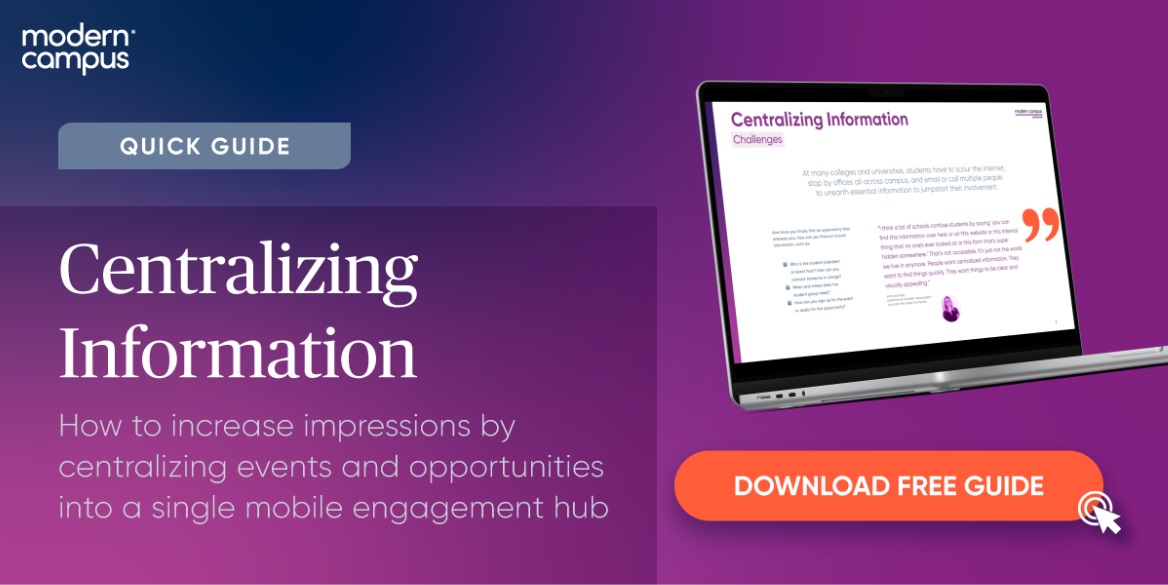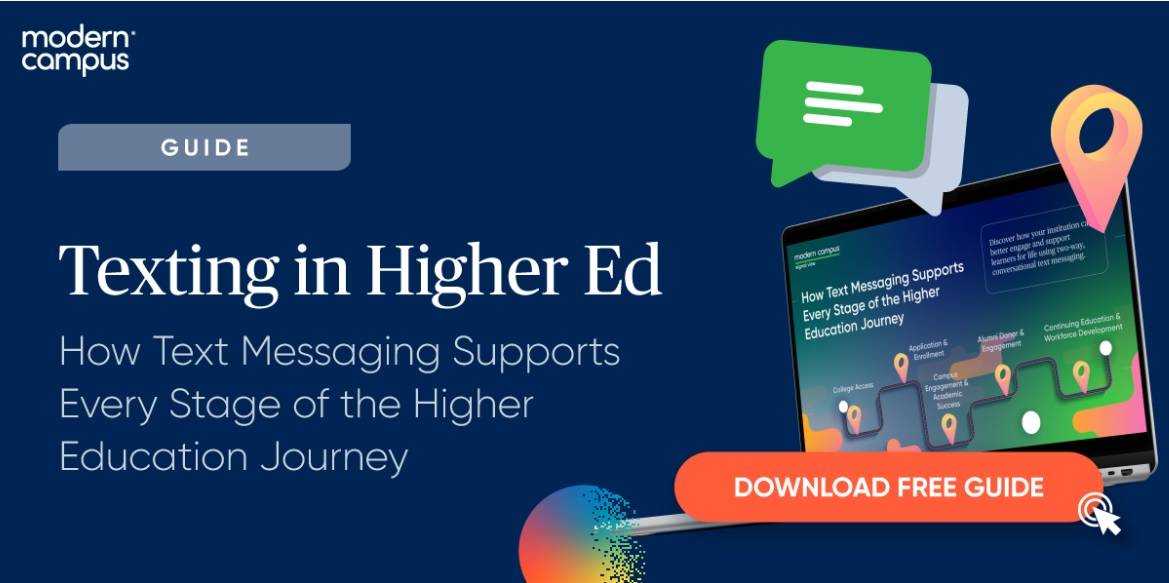Strategies for Improving Persistence in Higher Education
Nearly one-third of students who enroll in undergraduate programs across colleges in North America stop out and never earn a degree. As we previously explored, common challenges that drive low persistence and graduate rates in higher education include:
- The high costs of tuition, textbooks and other fees
- Course schedules that don’t fit around students’ other responsibilities
- The student’s lack of cultural capital
- Health emergencies
- Mental health challenges
- A lack of social and emotional connection to the institution
To reduce those barriers and help students stay motivated, overcome obstacles and access the resources they need to continue their academic journeys, institutions should employ the following proven strategies:
1. Provide financial support
Financial barriers can pose significant challenges to students, affecting their ability to afford enrollment.
By expanding or better promoting financial support services, including scholarships, grants, student loans and financial aid packages, institutions can alleviate a common element of student stress. When students have the financial resources they need to cover (tuition, textbooks, living expenses and other costs associated with higher education), they are less likely to become overwhelmed by financial worries and can focus better on their academic development.
Institutions should also consider helping students afford “basic” needs, including food, housing and healthcare. Beyond scholarships, schools can offer food pantries, housing programs and free health services to directly address these necessities. Providing free or reduced childcare options can also help many students persist in their studies, as they may otherwise need to stop out in order to care for their children or younger siblings.
2. Offer flexible learning options
Flexible learning options, such as online and evening courses, can tackle common barriers to student persistence in higher education—by enhancing accessibility, accommodating diverse schedules and promoting personalized learning.
These options enable students to balance their education with other responsibilities, including work, childcare and eldercare. Furthermore, allowing students to progress at their own pace, attend class without a commute and use technology to aid their learning expands access and prevents academic burnout.
Institutions that offer more custom, personalized experiences send a vital message to students: You fit here. Flexible programming shows that the college or university is able to evolve to meet changing student needs, rather than expecting students to disrupt their own lives to meet stringent schedules and modules.
3. Create a one-stop shop for student support
Designing and managing reliable student services is only half the battle; institutions also need to make students aware of those services.
The best promotional strategy is a multi-channel one. Modern learners seek out information from various places. Institutions should communicate their student support services, financial aid resources and flexible learning opportunities on their website, within social media, during in-person events (like orientation or resource fairs), and in email campaigns.
The more chances you give students to find and leverage your resources, the more your services will be used, thereby supporting persistence.
Additionally, all events, services and opportunities should be easy to find within a centralized hub. That way, you’ll capture students who happen to stumble upon your social media posts, websites and events and provide comprehensive information to students who proactively seek it out. That’s exactly what student engagement platforms, like Modern Campus Presence, offer. These tools are designed as one-stop shops for student involvement, providing visitors with up-to-the-minute information about clubs and organizations, along with upcoming in-person and virtual events.
They typically include org directories, activity calendars and event registration forms, along with other features designed to connect students to opportunities managed by Student Affairs departments. But Modern Campus Presence’s web portal and mobile app go beyond that, serving as student hubs for opportunities across the entire institution. Colleges and universities that include tutoring, academic advising, career counseling, the writing center, peer mentoring and first-year experiences programs, and other academic support resources in Presence—alongside co-curricular offerings—understand that students are seeking a unified campus experience.
By adopting an intuitive go-to platform for all of your students’ needs and interests, you’ll increase students’ discovery of opportunities and usage of services. For example, The University of Lynchburg increased engagement by 11 percent, College for Creative Studies quadrupled its number of student organizations and the University of Wisconsin-Oshkosh processed more than 400 online food pantry orders.
All of these wins allowed students to excel within their institutions, fueling increased persistence rate.
Discover how easy it is in our free guide.
4. Improve communication
Colleges and universities should consider how staff communicate with students on a custom, individual level.
Email once reigned supreme, but the latest research shows that only around one in five emails are ever opened. Today’s consumers, across all ages, prefer text messaging. A whopping 97% of American adults text weekly, and text messages have an open rate of 98%!
We explored the following benefits of text messaging in 4 Ways Text Messaging Supports Student Retention, all of which stand to increase retention:
- Uncover roadblocks: Through two-way conversational text messaging, a student may disclose crucial details about the challenges they’re facing, which allows staff to better connect that student with the right resource or strategy.
- Remind learners to take action: Texting is a great way to gently remind students of upcoming deadlines, such as forms to complete, events to attend or meetings to schedule. Along the way, you can engage students in conversational messages about those tasks—allowing you to advise learners past barriers, fuel their excitement or eliminate their worries.
- Build relationships: Many of today’s learners build or sustain relationships with friends and family through text messages. So they’ll be naturally attuned to build relationships with your staf, faculty and instructors via text as well! It’s a smart, scalable way to extend your reach and warm students up to your services.
- Encourage engagement: Texting can help you amplify upcoming co-curricular opportunities and thereby improve student retention in higher education. You can instantly send texts to thousands of students about upcoming events, segmented by demographic to ensure relevancy.
SMS text message platforms make designing, scheduling and sending text messages to hundreds or thousands of students shockingly easy. Discover innovative ideas for when, how and why to message learners in our free guide.
Guaranteeing 100 percent student satisfaction and degree completion might never be possible. But by providing the right support services and infrastructures, you can steadily build up student resiliency, increase degree access and support the core mission of your institution.
In case you were wondering how to also improve student retention, be sure to read our blog post about it! And for more information, you can also read our blog about persistence vs. retention.
Last updated: October 9, 2023






